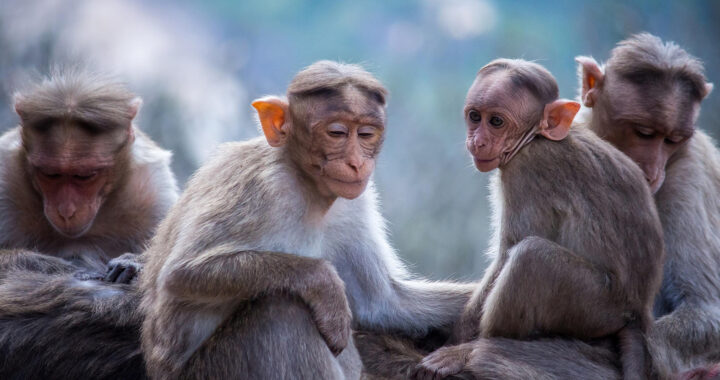A study, published in the Proceedings of the National Academy of Sciences in July 2025, has challenged the long-held belief that male dominance is the norm in primate societies. It revealed that male social superiority over females is far less common than previously assumed. This was drawn on data from 253 populations across 121 primate species.
Evolution of Male–Female Power Relations in Primate Societies: Evidence from 121 Species
Background
The research was conducted by teams from the University of Montpellier, the Max Planck Institute for Evolutionary Anthropology, and the German Primate Center. Their analysis focused on patterns of aggression and dominance between male and female individuals in both solitary and group-living primate species. Elise Huchard is the lead author.
Aggression data from 253 populations across 121 primate species were analyzed. The researchers specifically quantified male–female conflict outcomes and tested five hypotheses related to dominance. Factors such as mating system, body size, habitat type, and reproductive roles were evaluated to identify patterns in intersexual dominance relationships.
Findings
Results showed that male dominance—defined as males winning over ninety percent of conflicts against females—was observed in fewer than 20 percent of studied primate populations. This is contrary to popular assumptions. Moreover, in most primate societies, power relations between the sexes appear more balanced or even biased toward females.
Female-biased dominance tended to transpire in monogamous or single-partner, arboreal, or sexually monomorphic species. Note that females have greater reproductive control, lower risk in offspring care, and often face intense competition with other females in these environments. These factors collectively strengthen their influence within social hierarchies.
In contrast, male-biased dominance was more common in polygynous species, where males are larger and physically stronger. These species are usually terrestrial and group-living. The specific conditions promote and favor physical contests for dominance. This means that brute strength tends to shape power structures more than social strategies.
The study also revealed that intersexual contests—or aggressive interactions between males and females—occur more frequently. These interactions specifically accounted for nearly half of all observed conflicts. The researchers explain that this indicates that male-female power struggles are a central component of primate social life and not marginal exceptions.
Researchers also found that female dominance often and significantly hinges on strategic behavior and not physical force. Specifically, in most instances, females leverage control over reproduction and competition within their sex to establish and attain influence and control. Philopatry, or remaining within their natal groups, also helps them build social alliances.
Implications
The aforementioned findings challenge the popular notion that male dominance in primate species is natural or universal. They underscore that sex-based power hierarchies are shaped by different factors like specific ecological context, the underlying social structure, and mating systems, rather than fixed biological imperatives rooted solely in physical advantage.
Summary
• Prevalence of Conflict: Intersexual conflicts made up around 50 percent of all aggressive interactions in the investigated primate populations.
• Male Dominance Rarity: The research revealed that male primates won over 90 percent of conflicts in less than 20 percent of primate populations studied.
• Female Dominance Conditions: Female dominance was more common in primate species and populations where females control reproduction.
• Female Competition Influence: Their dominance also appeared in solitary or pair-living species where female–female competition was intense.
• Male Dominance Traits: Male dominance occurred mainly in polygynous, terrestrial, and sexually dimorphic species where males use physical strength.
• Dominance Variability: Most primate societies exhibited no clear sex bias in dominance and influence. This indicates significant variation across species.
• Strategic Female Power: Female dominance often emerges not through physical strength but through reproductive control and social strategies.
• Human Implications: The findings challenge assumptions about male supremacy and may reshape debates on gender roles in human evolution.
FURTHER READING AND REFERENCE
- Huchard, E., Kappeler, P. M., Smit, N., Fichtel, C., and Lukas, D. 2025. “The Evolution of Male-Female Dominance Relations in Primate Societies.” Proceedings of the National Academy of Sciences. 122(28). DOI: 1073/pnas.2500405122
